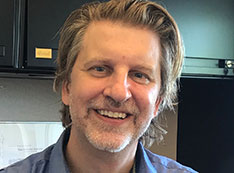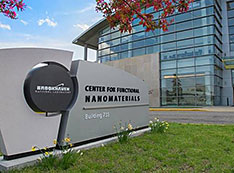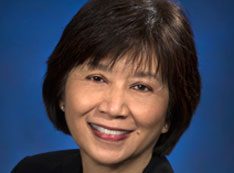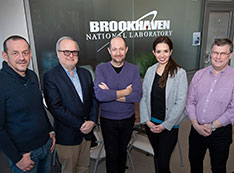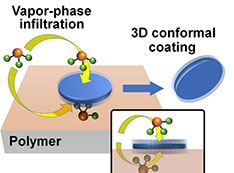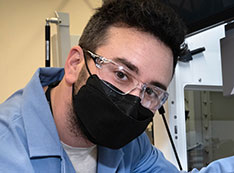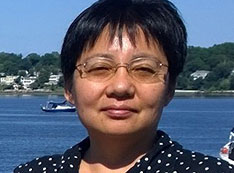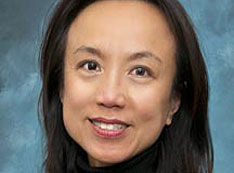A Message from Chuck Black
insights from the CFN Director
May 21, 2021
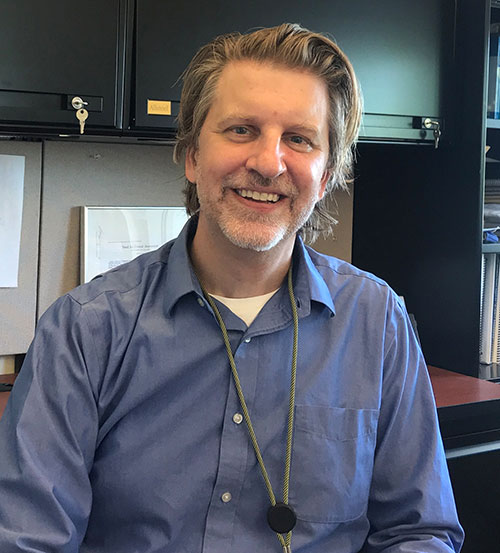
Chuck Black
Last week, we held our annual CFN and NSLS-II Joint Users’ Meeting, with an excellent lineup of speakers and technical workshops, and a plenary talk by U.S. Department of Energy Associate Director of Science for Basic Energy Sciences Linda Horton. Our meeting was held remotely again, and it was so satisfying to see the strong engagement by users, potential users, and staff—with over 1,100 registered attendees.
What a difference a year makes, right? I was thinking about that as we were preparing for this year's meeting. Last year around this time, we were still reeling from the first wave of COVID-19, sheltered at home, and learning how to engage remotely on Zoom and Microsoft Teams. We were shell-shocked, wondering how it could possibly be true that our world had turned so upside down. We were suddenly and unexpectedly asking ourselves hard questions, like Will I get sick today? Will my friends and family stay safe? Will I die?
This year, with science prevailing over COVID-19, things feel different. We’re taking our world back, and I feel optimistic this spring. Now, we’re asking ourselves different kinds of questions, like When it is OK to take off my mask? When can we start making plans? What is normal life, and when will we get back to it? And even, Who are we now?
Most importantly, we are thinking about the deeper meanings of the challenges from the last year. What did we learn from this scary and anxious experience? In what ways are we changed, in ways that we’d like to keep?
Here are three observations I made, or re-made, about who we are and the importance of our nanoscience mission.
Observation #1: We work together. We don’t panic.
Those of us old enough will remember the fearsome boxer “Iron” Mike Tyson, who was the world champion and dominated the sport like few others. During his boxing years, Tyson was once asked how he strategized against his opponent’s plans for defeating him. In response, he famously observed, “Everybody has a plan, until they get punched in the mouth.” Tyson’s insight is that while plans and strategies are important, it’s during crises that we find out who we truly are.
I think we can all agree we got punched in the mouth in 2020. In January, we were living our normal lives, and by March, everything had changed. We shut the CFN down. We sheltered at home. On short notice and under duress,
- We transitioned the CFN to a state of minimum-safe operations
- We implemented new operational procedures to control the SARS-CoV-2 hazard
- We returned CFN to limited on-site operations
- And we continued our nanoscience mission, with users and staff working on site at the CFN every day since last summer
I remember being so proud one morning last fall, when I was sitting in the CFN lobby and saw the shuttle bus from Stony Brook University show up at the front door. Ten or so students and postdocs emerged from the bus, masks on, and entered the CFN for a day of research. They had important work to do.
For the last year, CFN users and staff have trusted each other with our health and lives. We have internalized and practiced the workplace culture that keeps us safe, so that we can carry on our important nanoscience.
And amid the challenges of 2020, the CFN didn’t just survive. We thrived. CFN users and staff published 379 papers in peer-reviewed journals—the most ever for the CFN in a single year! By this measure, 2020 was the most impactful year yet for the CFN.
Observation #2: We are adaptable. We are resilient.
When we went home last March at the peak of the COVID-19 first wave, the CFN faced a sort of existential question for a scientific user facility: How can the CFN collaborative model work, when it’s hard or impossible for users and staff to get together and collaborate?
In confronting this question, I’ve been reminded again and again of the last lines of the 1953 novel The Unnamable, written by Samuel Beckett. It’s a classic ending, during which the protagonist is told that despite very difficult circumstances, they must carry on. And in response, they reply, “I can’t go on. I’ll go on.”
I’ve been hearing those lines a lot in my head during the last year. Yes, 2020 was challenging. We may have felt at times like we couldn’t go on. And yet, we must go on, and so we do. Because our nanoscience mission is too important to stop.
This last year has forced us to envision how the CFN be a resource for users, even when users can’t be physically present. Admittedly, so far, we’ve been scrambling somewhat and doing our best—using cellphone conversations and video chats with users while staff operate the instruments. With these methods, CFN staff supported 120 unique users remotely last year—a number we have already exceeded in 2021.
We’ve realized that such remote engagements, if done effectively, are a substantial opportunity for lasting improvements to the CFN facility, well beyond COVID-19. So, we’ve created an initiative called Remote@CFN to get these engagements right, and we need your help!
Remote@CFN rests on three pillars:
- Remote engagement. Staff are developing approaches for seamlessly engaging users not physically present in the CFN during their facility use. Currently, we’re piloting simple and complex solutions—including cellphones, web tablets, web cameras, and integrated video carts—and looking for the most effective and natural ways to conduct these engagements.
- Remote instrument operation. Staff are piloting remote operation of 10 instruments: four scanning probe microscopes, four x-ray nanoscience instruments, one transmission electron microscope, and as always, our computational cluster. User feedback on the remote experience is essential. We need to know which instruments can be operated effectively in a remote fashion and which can’t. Please try one out and give us your feedback!
- Remote data access. Staff are implementing a remote solution for secure access to data collected using CFN instruments. Feedback from staff and users on some early implementations has been uniformly positive, and so we’ll be making data on most/all CFN instruments available this way by the end of the year.
But to make sure these remote capabilities are the best they can be, we need your input. Please engage CFN staff in pilot studies and let us know what works well and what doesn’t.
Observation #3: We must dare mighty things.
We can all be proud to be members of the scientific community, never more so than today when science is saving the world from COVID-19 through the unprecedented development and manufacture of safe, effective vaccines and substantial improvements in testing capabilities. Science is winning this fight, for the benefit of every person. There’s no greater accomplishment than that.
Scientists have a unique opportunity to do work that can fundamentally change our world—if we are bold enough to imagine it. I’ve written about this idea before. Though not a scientist, Theodore Roosevelt captured this sentiment beautifully in a speech he made in 1899 while he was Governor of New York and two years before he became the youngest-ever U.S. President.
In Roosevelt’s speech, now known as “The Strenuous Life,” he urges everyone to think in these grand and daring terms: “Far better it is to dare mighty things, to win glorious triumphs, even though checkered by failure, than to take rank with those poor spirits who neither enjoy much nor suffer much, because they live in the gray twilight that knows not victory nor defeat.”
This past year has reminded all of us our world has big challenges that science must solve. COVID-19 has been one challenge, but there are so many others. Let’s all reflect on the research we are doing, and ask ourselves, Am I daring mighty things? Let’s seize our opportunity to do work that really matters.
The CFN mission is to help users achieve their highest nanoscience aspirations. We want to help users to dare mighty things. The specialness of the CFN comes from combining an expert staff, a community of talented users, a portfolio of distinctive nanoscience instruments, and a core commitment to cooperative nanoscience.
Let’s keep working together and continue to make a difference.
—Chuck Black
CFN Director
2021-18902 | INT/EXT | Newsroom




